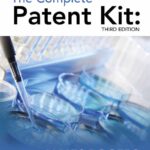Affinity separation relies on the specific recognition between the antibody molecule and a complementary ligand. As this binding is highly specific, the use of affinity purificaiton reduces non-specific interactions, increases operational yields and facilitates the elimination of undersirable containants. (J Chromatography A, 1160 (2007) 44-55).
Affinity chromatography is a standard purificaiton option for some proteins such as antibodies. Protein A chromatography is typically the first step and anion exchange is employed frequently as the last chromatography step. The current industry norm is to have one additional fractionation step in the process (Gagnon, p. 498). The use of a cationic exchange material versus an anionic exchange material is based on the overall charge of the protein and thus one can employ an anionic exchange step prior to the use of a cationic exchange step, or a cationic exchange step prior to the use of an anionic exchange step. (WO 2010/048192, p. 30, lines 14-15). Almost all current industrial antibody purification platforms use protein A (Spitali, WO2012/013682) .
Specific Ligands/Types of Affinity Chromatography See outline
For the Purification of Specific Types of Antibodies
Monoclonal antibodies:
Protin A chromatography exploits the fact that murine IgG binds to Protein A Sepharose at pH>8 but does not bind at pH<3.0. Typically, the pH of the MAb-containing solution is adjusted to 8.5 and passed over a column of Protein A. With the MAb bound to the protein A, contaminants are washed from the column with a pH 8.5 buffer, Finally, the purified MAb is eluted by passing a pH 3.0 buffer over the column. (Profy, EP0282308)
Hahn (J. Chromatography A, 1102 (2006) 224-231) teaches purification of a cell culture supernatant containing a monoclonal antibody (method for purifying an antibody compound from a suspension) brining the suspension into contact with MabSelect Sure (Protein A derivative), a washing step with an equilibrationbuffer and elution with 0.1M glycine pH 3.0 and finally collecting the eluate fractions.
For Separation by Fc region: US 7820799, issued 10/26/2012, describes methods of purifying polypeptides having a Fc region such as antibodies or antibody fusions by adsorbing the polypeptides to a Fc binding agent (pH 6-8) such as Protein A/G, followed by wash to remove impurities and subsequent elution).
Godavarti (WO 2006/138553 A2) teaches methods of purifying polypeptides having an Fc region such as antibodies or antibody fusions by adsorbing the polypeptides to Protein A or Protein G, followed by a wash with a divalent cation salt buffer to remove impurities and subsequent recovery (pH 2-4).
Nanobodies:
Beirnaert (Wo 2006/122786A2) discloses using Protein A affinity chromatography for the purification of nanobodies using PBS as running buffer and glycine for elution. Beirnaert (WO2008/142164) also teaches purificaiton of nanobides via CEX as well as purificaiton of trivalent bispecitif nanobodies fused by a Gly/Ser linker via MabSelect Xtra and subsequent purificaiton by CEX. Also disclosed is the use of IMAC (see above). Hermans (WO2008/071447A2) also disclsoes purifiction of a fusion protein comprising a nanobody using protein A.

